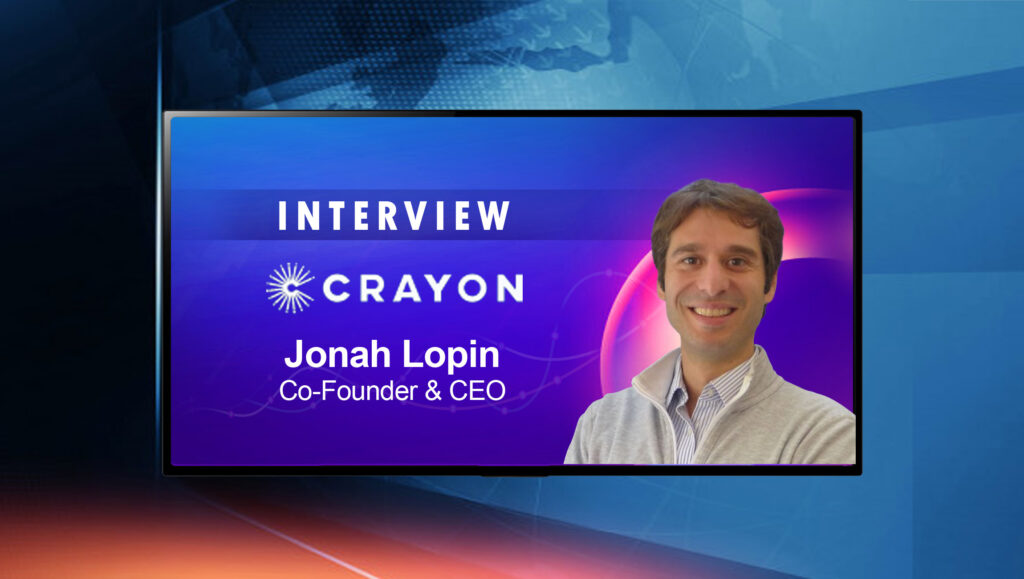Jonah Lopin, Co-Founder & CEO at Crayon dives into a few top sales data points that every sales and marketing leader should be focusing on while sharing his thoughts on the evolving use of sales intelligence: _______ My co-founder, John Osborne, and I met at MIT Sloan doing our MBAs back in 2007, although it was almost a decade after graduation before we founded Crayon in 2015. In the interim, John was in the Bay Area at AdMob. I was the 6th employee at HubSpot and on the management team, helping the company grow from an unknown startup to going public in 2014 with a $1 billion market cap. Read More: Setting Records, Walmart Continues Moving Toward Becoming a Totally Renewable Business The thesis behind Crayon is that there’s never been a good way to do competitive intelligence (CI), because it’s always been a human-driven, research-driven discipline. This means insights are very expensive to generate, and even worse, they lag the market by weeks or months, and therefore often aren’t actionable or impactful. At Crayon, we drive CI to a software discipline. What if competitive intelligence could be programmatic and continuous? When CI is software-driven, not only are the insights inexpensive, they are real-time and therefore much more actionable. Finally, CI can be timely and hyper-actionable in sales, customer success, marketing and product. There are 2 shifts that make it possible to solve for market and competitive intelligence with software, where that was never possible before. So in one sentence – the explosion of digital footprints on the web and massive adoption of messaging and workflow systems by your front line means there’s a much better way to compete that’s software-driven. And that’s what we do at Crayon. Crayon’s platform helps clients win more competitive sales deals, differentiate more effectively from the competition, and improve execution and decision-making in product, marketing and executive teams. Here are two examples of how clients are using the Crayon platform: Crayon is the competitive intelligence backbone for all of Dropbox. Every won & lost competitive deal globally flows through Crayon via our Salesforce integration, we power competitive alerts across the company via email & Slack integration, we’re the system of record for employee-sourced intelligence, and we’ve enabled the CI team at Dropbox to have a big impact on competitive win rates and other KPIs. Three of the big use cases at Dropbox include: Over 500 sales folks at ZoomInfo use Crayon Battlecards & Slack/email alerts every week to access real-time win/loss insights, team-sourced intelligence, and competitive shifts. This effort has positively impacted their ability to sell – and win – against the competition. The ZoomInfo team is also using Crayon to support executive decision-making through regular intelligence briefings. Any sales team should be focused on consistently gathering the following data on competitors: We are constantly updating and evolving our product based on customer needs and reviews. We are currently investing across three key areas, where we feel the most customer demand: Sales and marketing leaders should be re-thinking how they can compete more effectively using data and software. It’s time to instrument the way we go to market from a competitive standpoint! Most businesses lose about ⅓ of their sales deals in head-to-head competition. Three quarter of tech buyers think the vendors they’re evaluating look the same – a failure to differentiate. What if you could buck these trends? What if you could win more competitive sales deals and stand out in your market? According to our 2021 State of Competitive Intelligence Report, which surveyed more than 1,000 companies, over 60 percent of businesses report competitive intelligence has positively impacted revenue, a 17 percent increase from their 2019 report. It’s time to dedicate both technology and human capital to competitive intelligence so your business can see and seize on opportunities to build competitive advantage! Read More: SalesTechStar Interview with Mark Magnacca, President and Co-founder at Allego Crayon’s market and competitive intelligence software platform enables businesses to capture, analyze, and act on market movements from their competitors, customers, and partners. Jonah Lopin is the CEO and co-founder of Crayon. Prior to Crayon, Jonah was VP Customer Success at HubSpot, joining as an early employee and scaling the team over six years to thousands of customers and hundreds of employees. Jonah has also built and launched social and mobile apps and served as a consultant in the Strategy & Operations group at Deloitte Consulting. Jonah has lived and worked in China, where he focused on entrepreneurship and non-profits. He holds a BA from Cornell and an MBA from MIT Sloan.Hi Jonah, we’d love to hear about your journey through the years…tell us more about Crayon and what inspired the Crayon platform and journey?
What are some of the top trends in marketing and sales intelligence today that you feel are redefining processes and plans for sales and marketing leaders?
How have you seen leading brands use competitive intelligence to drive better goals: a few key best practices and learnings to share from these stories?
Dropbox
ZoomInfo
Can you talk about some of the core competitive intelligence data points that you feel sales people and especially sales leaders need to be assessing more in today’s business environment?
How do you feel platforms such as this will evolve in future and what will drive demand for more innovations and what kind?
A few thoughts on what you feel today’s sales and marketing leaders need to do differently (and suggestions on martech / salestech) to help them stand out from the crowd!

The Importance Of Humor In Content Marketing and More, Catch our Latest Podcasts!





















